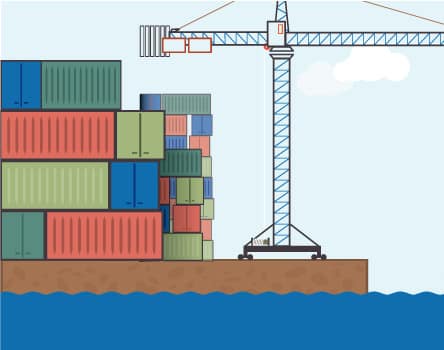Every Friday, we answer a common question about fulfillment, shipping, or business. This week’s question comes from one of the fans who entered our giveaway contest for a quadcopter drone. Today we will answer the following question: “what are shipping zones and how do they work?”
What is a Shipping Zone?
If you’ve ever used the US Postal Service to ship a package from one place to another, you’ve probably seen the term “shipping zone.” It’s not just the USPS, though, because FedEx and UPS also use shipping zones.
The concept is pretty straightforward. We’ll use the USPS’s system to explain.
When sending a package domestically within the US, shipping zones are numbered 1-8. Lower numbers are closer to the sender and higher numbers are farther away from the sender.

In the above example, these are the USPS shipping zones for Fulfillrite, which is based in New Jersey. Zones 1-3 are in blue, 4-6 are in green. Yellow is for Zone 7 and Red is for Zone 8.
The higher the number, the farther the package has to travel. The USPS bases zone numbers on ZIP codes on their distance from the sender. That is to say, if you’re sending a package from Nashville, you’ll see different shipping zones than a sender from Newark.
Why Shipping Zones Affect Shipping Prices
If you’ve read some of our other posts, you know that shipping prices tend to vary a lot. The weight and dimensions of the package to be sent affect the price, but another major factor is the distance between the sender and the receiver. The reasoning is pretty straightforward – more miles to travel means higher fuel costs.
It’s conceivable that shipping companies could calculate the exact mileage between the sender and receiver and factor that into postage. But let’s be honest: that would be very complicated. For that reason, postal carriers such as the USPS, FedEx, and UPS simplify their system, breaking the country – and indeed, the world – into zones.
Final Thoughts
Shipping zones are the simplest way to approximate distance between the sender and the receiver. This information is then used to set prices so that carriers charge a reasonable rate so they can cover fuel costs incurred by shipping a package.
Many things in shipping are complicated. This, however, is straightforward 🙂




